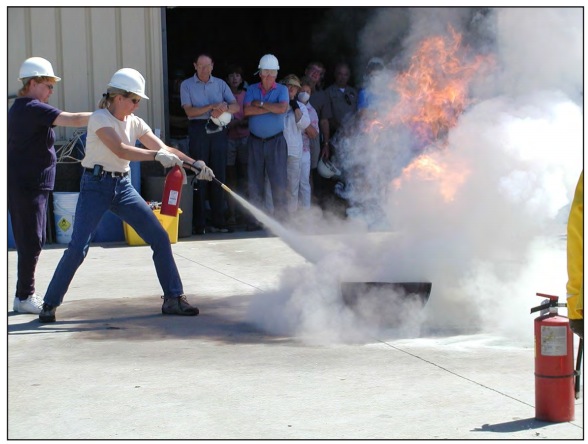MINETA TRANSPORTATION INSTITUTE
The transit and transportation sector is a key critical infrastructure. All other emergency response depends on the availability of functional roads and transportation assets. Police, fire and emergency medical services (EMS) vehicles can only reach disaster victims if passable and safe roads have been inspected and cleared of debris by the transportation agency personnel. Rescue and relief goods can only be delivered to the disaster site if roads, railroads and ports can recover functionality rapidly. This ability to respond to disasters effectively is based on training the transit and transportation agency personnel in advance, and practicing the knowledge and skills needed to ensure the rapid response to disaster events through realistic exercises.
Following research in 2010, Edwards and Goodrich published Emergency Management Training and Exercises for Transportation Agency Operations, MTI 09-17 (Edwards & Goodrich 2010). One outcome of the research was recommendations from practitioners to create a practical handbook for transportation sector exercise directors. The Department of Homeland Security (DHS) has provided extensive general guidance on developing training and exercise programs for public entities, but little had been done to focus that material on the transportation sector specifically. The role of the transportation sector in delivering emergency response services is often overlooked, both by the other first responders, and by the transportation sector itself.
Transportation agency personnel interviewed for MTI 09-17 stated that they had little help in developing a thorough and effective training and exercise program specifically for transportation personnel, and often relied on multi-agency training and exercise events focused on police and fire personnel for achieving their exercise goals. Transportation sector emergency managers noted that they needed specific guidance in developing exercises that actually tested their internal training and emergency plans, which are focused on the work of their agencies, such as debris removal, road and bridge inspections, permitting, and system operations, as well as the Logistics Section functions that are usually the focus of transportation sector entities in multi-agency, multi-jurisdiction exercises.
Part One of his report provides information on federal training and exercise requirements for transportation sector entities, including a list of guidance documents, and federal plans and frameworks that guide the development of emergency management in the transportation sector. As shown in Table 1, the terrorist attacks of 9/11 resulted in the development of a more detailed set of regulations for homeland security and emergency management activities at the local and state levels and among federal agencies, addressing all four phases of emergency management: mitigation, preparedness, response and recovery. One of these regulations is the Homeland Security Exercise and Evaluation Program (HSEEP) that governs the conduct of the emergency management and homeland security exercise program.
Part One then summarizes the changes to emergency management programs and requirements that grew out of the Presidential Policy Directive 8 (PPD-8) issuance in early 2011, and the challenges of adult training (Obama 2011). Part Two is a practical handbook using the project management approach that guides transportation sector staff in the creation, development, implementation and wrap-up of federally mandated exercises. The guidance complies with the Homeland Security Exercise Evaluation Program (HSEEP), but focuses the scenarios and implementation guidance on the actual experiences and work of the transportation sector.
About Mineta Transportation Institute
transweb.sjsu.edu
“The Mineta Transportation Institute (MTI) conducts research, education, and information and technology transfer, focusing on multimodal surface transportation policy and management issues. It was established by Congress in 1991 as part of the Intermodal Surface Transportation Efficiency Act (ISTEA) and was reauthorized under TEA-21 and again under SAFETEA-LU. The Institute is funded by Congress through the US Department of Transportation’s (DOT) Research and Innovative Technology Administration, by the California Legislature through the Department of Transportation (Caltrans), and by other public and private grants and donations, including grants from the US Department of Homeland Security.”
Tags: emergency preparedness, Mineta Transportation Institute







 RSS Feed
RSS Feed